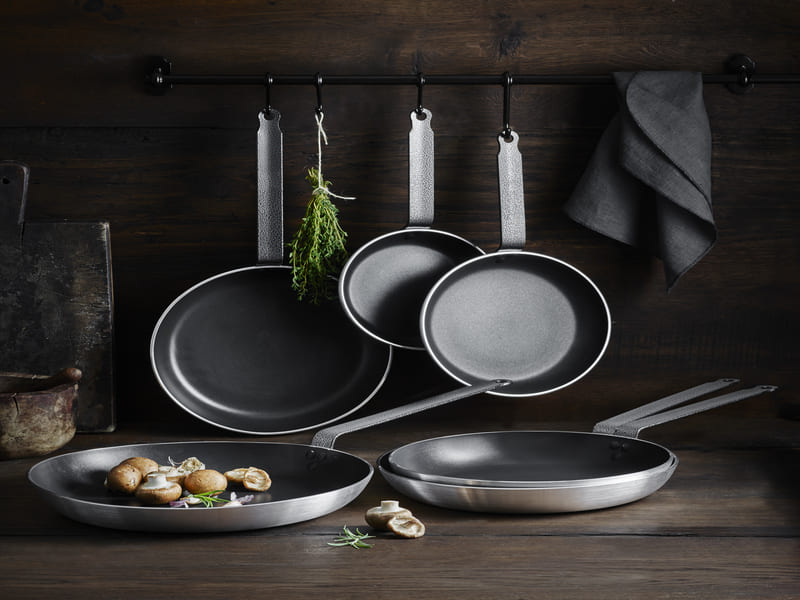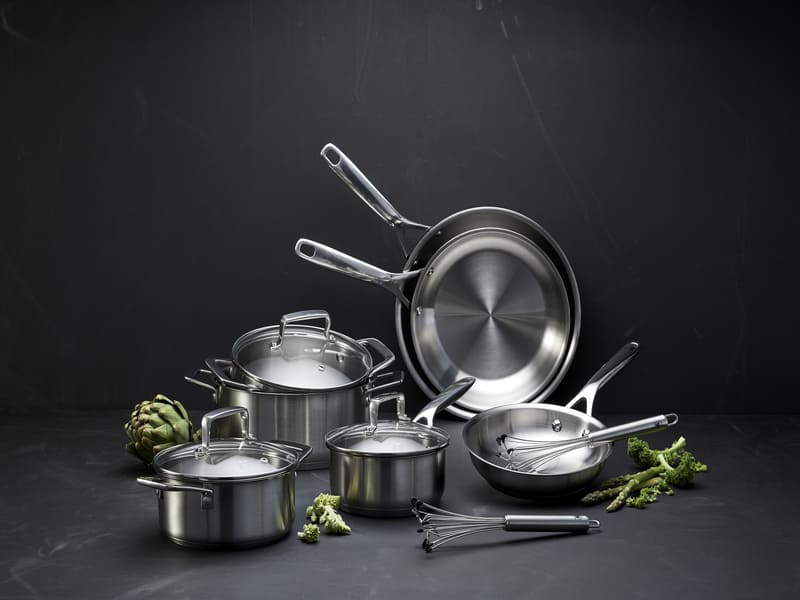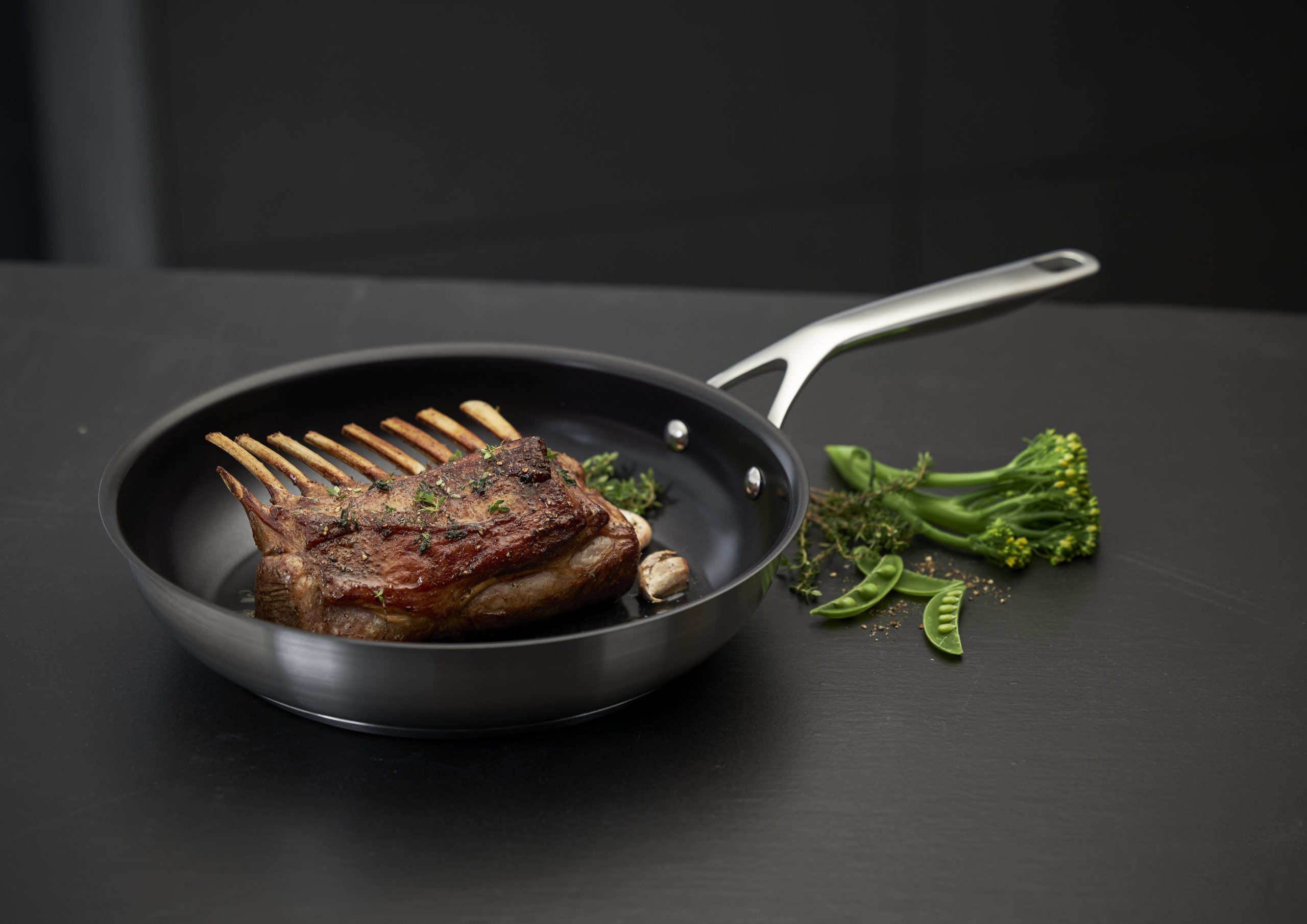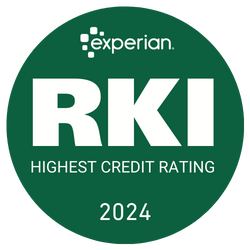
F&H Group A/S supports the ban on PFAS
Basically, there are two kinds of pots and pans: coated and uncoated. Which type you choose depends on many factors, both in terms of what you are going to prepare and how experienced a cook you are. Experienced cooks who know and master their materials can cook all kinds of food in uncoated cookware without burning anything. For others, a non-stick coating is an invaluable help.


What does a non-stick coating do?
In short, the coating helps prevent food from sticking and burning. Fried eggs slide effortlessly off the pan and burgers are easy to flip, which also makes cleaning the pan much easier.
So, non-stick coatings have many good and useful properties, but have nevertheless caused debate and a great deal of uncertainty. That’s because the PTFE coating contains fluorinated substances (PFAS), and while PFAS substances are practical in many contexts, they are also a concern due to their potential health and environmental risks. Because of these concerns, a number of countries and organisations have taken steps to regulate or ban the use of PFAS.
Should old frying pans with non-stick coating be discarded?
No. This is not necessary, but you should keep an eye out for damage to the coating.
There are many different types of PFAS, and some are more problematic than others. The type of PFAS used for frying pans is not problematic in the small quantities we are talking about here, and is considered so well bound in the coating that the fluorinated substances are not transferred to food during cooking.
However, as soon as the coating becomes scratched, starts to warp, overheats or becomes damaged in other ways, the pan should be discarded.
Choose PFAS-free alternatives
As a consumer, you can choose to avoid products containing PFAS and other fluorinated substances. In this way, you can help reduce the impact on the environment and protect your own health.
You can use only uncoated cookware made of stainless steel, iron or cast iron, or you can opt for the non-stick effect by purchasing cookware with a ceramic coating.
What is a ceramic coating?
A ceramic coating is applied to the surface of the casserole or pan in the same way as a classic non-stick coating would be. However, unlike in the case of traditional non-stick, the ceramic coating is made from inorganic materials added to ceramic material, making it possible to produce the coating without any PFOA or PFAS. The coating forms a very smooth and durable surface that is particularly well-known for its ability to withstand much higher temperatures than PTFE (non-stick) coatings. So the coating does not disintegrate when cooking at high heat.
One should not expect the same non-stick effect as on a PTFE pan. At F&H, we have the following expectations for non-stick effect on a scale of 1 to 10:
| – Uncoated (e.g. steel) | 0 |
| – Ceramic coating | 6 |
| – PTFE coating | 10 |
When it comes to cleaning, all pans with ceramic coatings and PTFE coatings should be washed with a soft brush and washing-up liquid. We recommend using the dishwasher only for uncoated products.
Where does F&H Group stand on PFAS?
Our range includes pots and pans with both traditional non-stick coatings and ceramic coatings, and as mentioned, there is no risk associated with continuing to use the non-stick cookware. But as existing products are sold out, we will in future produce exclusively with the ceramic coating.
This means that we can put the label “Produced without PFAS” on all new relevant products.
What is PFAS?
PFAS is the abbreviation for per- and polyfluoroalkyl substances, a group of synthetically produced chemicals with unique properties including resistance to heat, water and grease. They are used in a wide variety of products and industrial processes.
PFAS substances are known for their ability to repel water and oil and are used in many applications, including in products such as rainwear, cookware, textiles, cosmetics, impregnating agents and medical devices. These substances are extremely long-lasting and do not degrade naturally in the environment, and for this reason they can have negative health and environmental effects.
What is PTFE?
PTFE is the technical term for the most prevalent PFAS substance. One of its uses is as an inner coating material in non-stick cookware.


